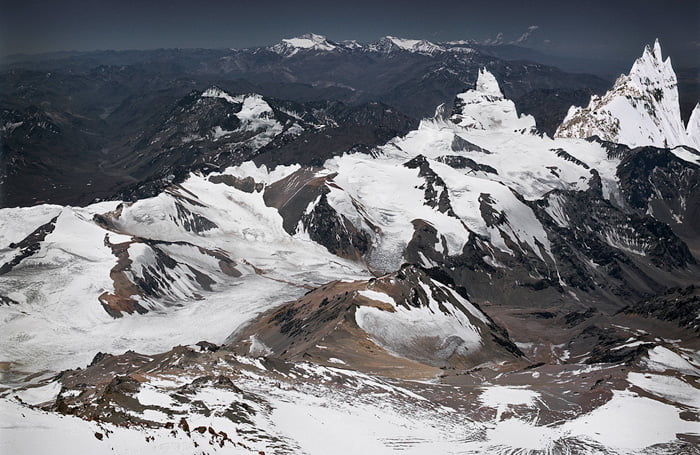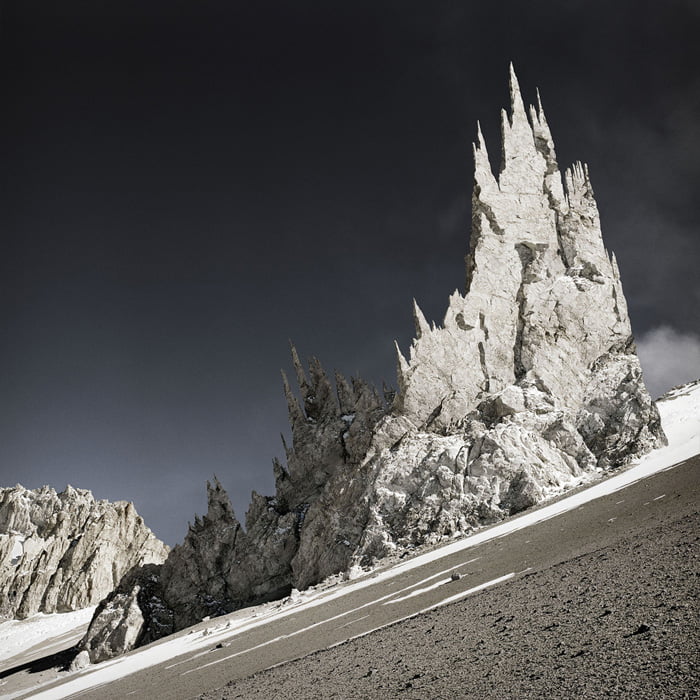
Enough to Make You Dizzy
Some of Michael Najjar’s images transport people to the precarious heights of the Andes mountain range in Argentina. Others focus attention on the severe cliffs over which a mountain can slide.
Using photographs taken during his climb to the summit of Mount Aconcagua, Najjar used the computer to manipulate the images of surrounding mountain ranges to track the paths of the world’s stock market indexes over the past three decades.
Inspired by his ongoing interest in technology, he attempted to evoke the impact of algorithmic trading on stocks and options trading, which carves out some market peaks and valleys. “I wanted to do something extremely physical to rematerialize what has become invisible,” Najjar said in a recent telephone interview from his Berlin studio.
Squared Away will reveal which photograph the artist himself believes best depicts Europe’s precarious financial and economic situation. But take a look and make your own decision:



On his January 2009 trek through the Andes mountains, Najjar said that he couldn’t carry print-outs of each index’s historic charts. Pulling them out of his pocket to compare them to mountain ranges might’ve endangered the band of highly efficient climbers. He instead memorized the rough contours of each market over the past 30 years. When he spotted a range that resembled a specific index’s historic chart, he stopped the other climbers to quickly snap a photograph.
“During the climb, [I] was looking around – and seeing, this might be DAX [Germany], this might be Hang Seng [China], or the Dow Jones – to find the similarities in the landscape I could transform digitally into the shape that matched precisely with the stock market,” he said.
Najjar explained his thinking about three of the many images in his series, “High Altitude:”
MSCI: a global index of23 country stock markets.
Najjar shot this from the summit of Mount Aconcagua, the highest peak in the Americas. The only image that he shot from the summit, he said, is “indicative of the global economic development related to the stock market indices.” This vantage point was a fitting “overview” of the global financial system and economy.
Nasdaq: the U.S. high-technology index.
“That shows the extreme,” Najjar said. “The peak is the dot-com bubble of 2000, and you can see how the market s can go up and how quickly things can go down. It’s the same thing [when climbing] on the mountain. One false step, and [you] can fall.”
Lehman Brothers: stock price for the U.S. investment bank, which collapsed in 2008.
“It’s not on a horizontal. … Any second the whole system might collapse which happened in Lehman, and now we’re facing a system collapse in Europe – it might happen.”
The next frontier for Najjar’s next series of photographs: space. He’s said he has purchased a $200,000 ticket on a Virgin Galactic spaceship. “I invest in my art projects,” he said.






